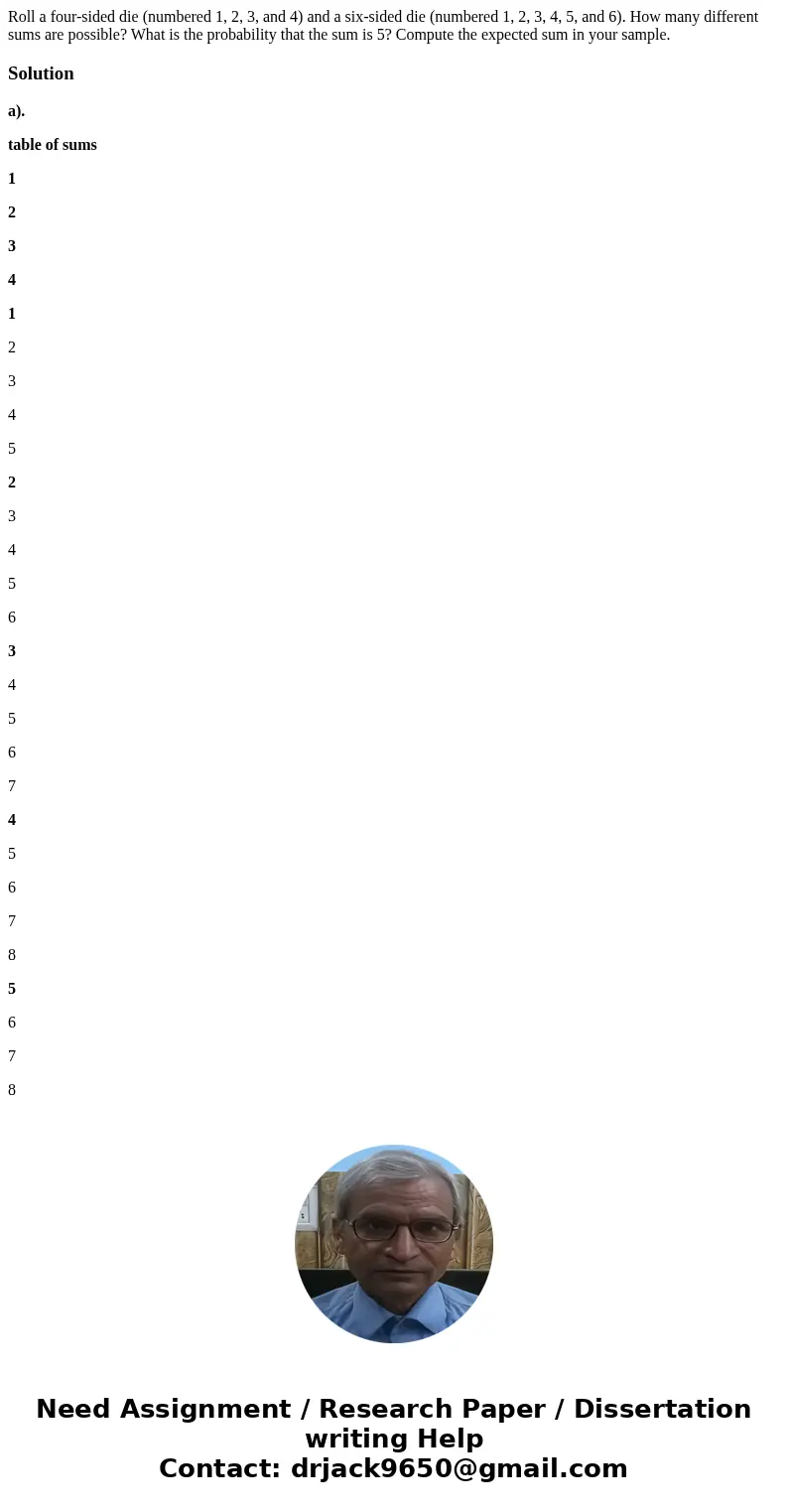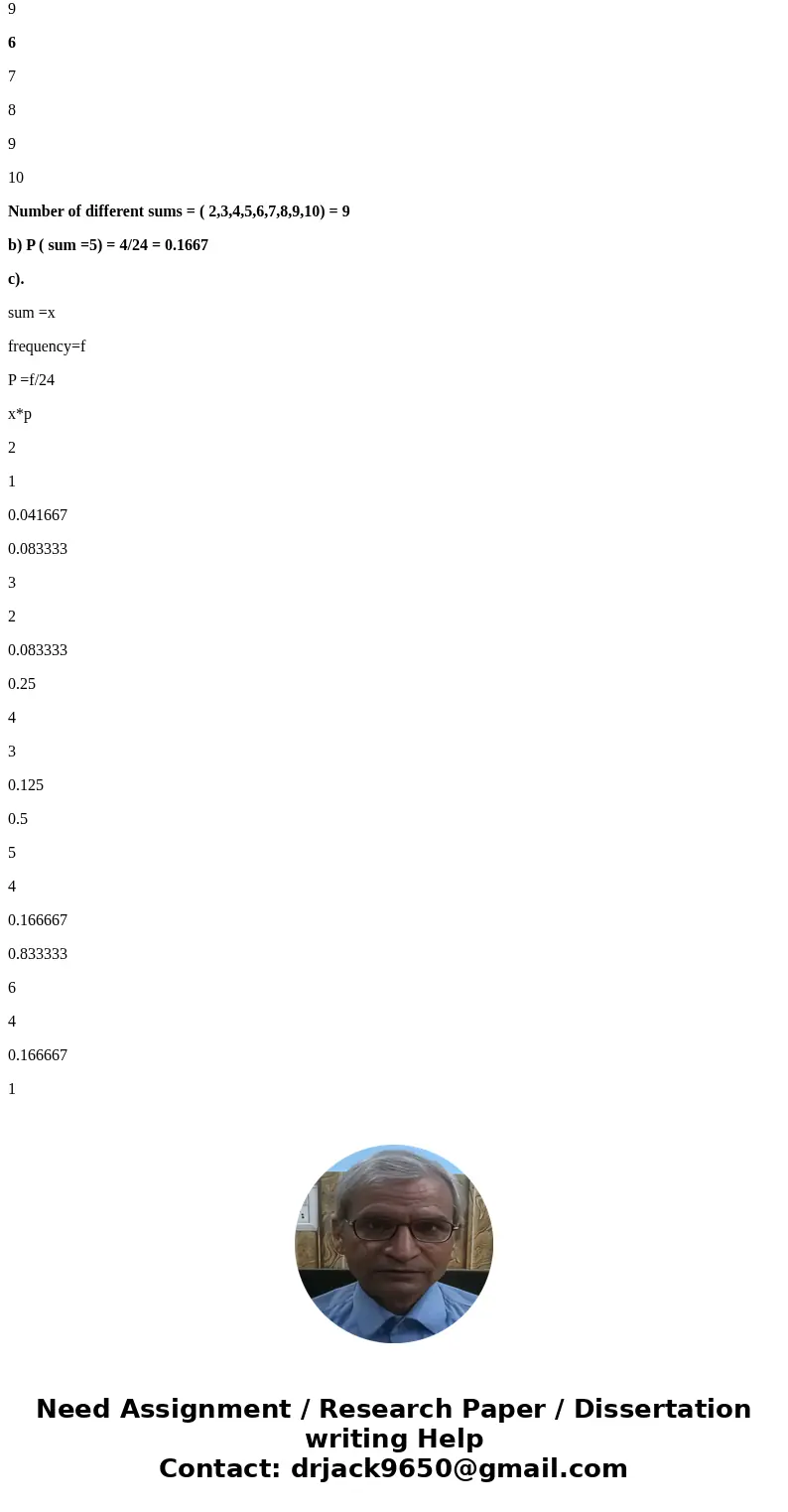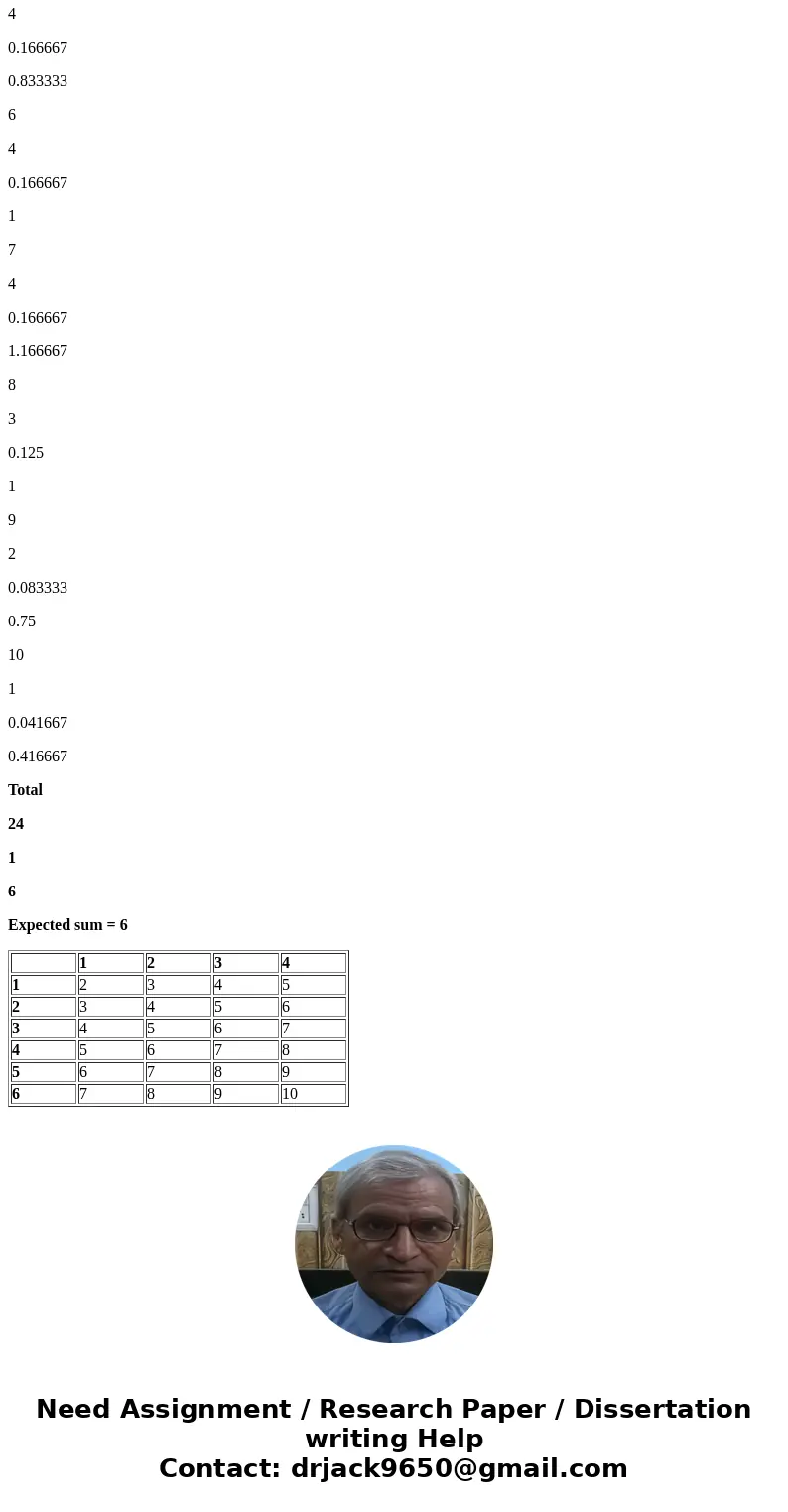Roll a foursided die numbered 1 2 3 and 4 and a sixsided die
Roll a four-sided die (numbered 1, 2, 3, and 4) and a six-sided die (numbered 1, 2, 3, 4, 5, and 6). How many different sums are possible? What is the probability that the sum is 5? Compute the expected sum in your sample.



Solution
a).
table of sums
1
2
3
4
1
2
3
4
5
2
3
4
5
6
3
4
5
6
7
4
5
6
7
8
5
6
7
8
9
6
7
8
9
10
Number of different sums = ( 2,3,4,5,6,7,8,9,10) = 9
b) P ( sum =5) = 4/24 = 0.1667
c).
sum =x
frequency=f
P =f/24
x*p
2
1
0.041667
0.083333
3
2
0.083333
0.25
4
3
0.125
0.5
5
4
0.166667
0.833333
6
4
0.166667
1
7
4
0.166667
1.166667
8
3
0.125
1
9
2
0.083333
0.75
10
1
0.041667
0.416667
Total
24
1
6
Expected sum = 6
| 1 | 2 | 3 | 4 | |
| 1 | 2 | 3 | 4 | 5 |
| 2 | 3 | 4 | 5 | 6 |
| 3 | 4 | 5 | 6 | 7 |
| 4 | 5 | 6 | 7 | 8 |
| 5 | 6 | 7 | 8 | 9 |
| 6 | 7 | 8 | 9 | 10 |



 Homework Sourse
Homework Sourse